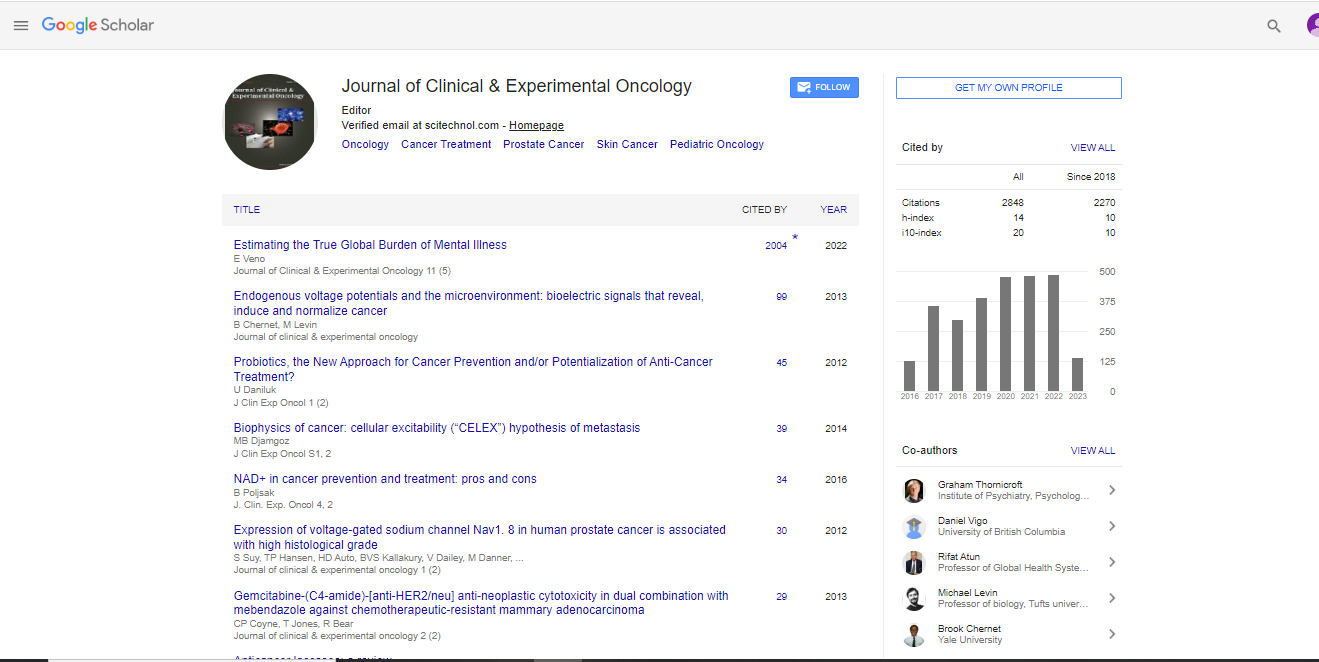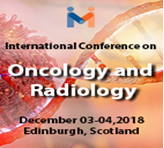Perspective, J Clin Exp Onco Vol: 12 Issue: 4
Exploring Cytogenetics Mechanisms and its Genetic Applications
Martin Robert*
1Department of Pathology, University of Maryland School of Medicine, Baltimore, United States of America
*Corresponding Author: Martin Robert,
Department of Pathology, University of
Maryland School of Medicine, Baltimore, United States of America
E-mail: martin_robert@msm11.edu
Received date: 24 July, 2023, Manuscript No. JCEOG -23-112398;
Editor assigned date: 26 July, 2023, PreQC No. JCEOG -23-112398 (PQ);
Reviewed date: 10 August, 2023, QC No. JCEOG-23-112398;
Revised date: 17 August, 2023, Manuscript No. JCEOG -23-112398 (R);
Published date: 24 August, 2023, DOI: 10.4172/2324-9110.1000365
Citation: Robert M (2023) Exploring Cytogenetics Mechanisms and its Genetic Applications. J Clin Exp Oncol 12:4.
Description
In the realm of genetics, the study of cytogenetics has emerged as a powerful tool, providing insights into the structure, behaviour, and functions of chromosomes within cells. Cytogenetics not only delves into the mechanisms governing the organisation of genetic material but also finds several applications in various fields, from diagnosing genetic disorders to understanding evolutionary relationships. Cytogenetics focuses on the visual and molecular examination of chromosomes within cells, elucidating the mechanisms that underlie their behaviour, replication, and inheritance.
Karyotyping involves arranging and analysing the chromosomes of an individual's cells to detect abnormalities or variations. This technique helps diagnose chromosomal disorders such as Down syndrome, Turner syndrome, and Klinefelter syndrome. Cytogenetics uncovers chromosomal abnormalities that result from mutations, deletions, duplications, or translocations. These aberrations can lead to genetic disorders and are key targets for investigation.
Cytogenetics studies the behaviour of chromosomes during cell division. In mitosis, chromosomes segregate into daughter cells, ensuring genetic stability. In meiosis, which produces gametes, the process of recombination and assortment develops genetic diversity. Fluorescence In Situ Hybridization (FISH) is a molecular cytogenetics technique that uses fluorescent probes to label specific DNA sequences on chromosomes. It aids in locating genes, identifying structural abnormalities, and studying chromosomal organization. Comparative Genomic Hybridization (CGH) detects DNA copy number changes, revealing chromosomal imbalances associated with diseases like cancer. It provides insights into genomic alterations and their implications.
Cytogenetics holds immense significance in various fields, contributing to medical diagnosis, evolutionary studies, and even criminal investigations. It plays a pivotal role in diagnosing genetic disorders caused by chromosomal anomalies. It aids clinicians in providing accurate diagnoses and appropriate medical interventions.
It enables prenatal diagnosis by analysing foetal cells to detect chromosomal abnormalities, helping expectant parents make informed decisions. Cytogenetics is used to characterise chromosomal abnormalities in cancer cells, aiding in the classification and prognosis of various cancers. Cytogenetics helps identify specific chromosomal translocations associated with certain cancers, such as the Philadelphia chromosome in chronic myeloid leukemia.
By comparing chromosome number, structure, and organisation across species, cytogenetics provides insights into the evolutionary relationships among organisms. It exposes the changes in chromosome structure and number that have occurred over evolutionary time, providing information about speciation and adaptation.
Cytogenetics techniques like DNA profiling and FISH are used in forensic investigations to establish genetic identity, link suspects to crime scenes, and solve criminal cases. It aids in plant breeding by analysing chromosomal variations and ploidy levels to produce improved crop varieties with desirable traits. It is employed to confirm the stability and integrity of genetically modified organisms by analysing their chromosomes.
Cytogenetics helps assess the genetic diversity and health of endangered species, informing conservation efforts and captive breeding programs. As technology advances, cytogenetics continues to evolve, integrating cutting-edge techniques and methodologies. Next- Generation Sequencing (NGS) technologies allow for more comprehensive analysis of genomes, uncovering subtle genetic variations and abnormalities that were once difficult to detect. Additionally, the integration of cytogenetics with other disciplines such as genomics and bioinformatics is enhancing the understanding of complex genetic interactions.
Conclusion
Cytogenetics stands as an essential aspect in the study of genetics, providing an overview of the intricate world of chromosomes and their implications for health, evolution, and more. Its mechanisms, from karyotyping to FISH, provide a deeper understanding of genetic material and its behavior. Beyond the lab, the applications of cytogenetics are far-reaching, influencing fields from medicine to conservation. As technology continues to advance, cytogenetics will undoubtedly continue to shape the understanding of genetics and impact a diverse array of scientific endeavours.
 Spanish
Spanish  Chinese
Chinese  Russian
Russian  German
German  French
French  Japanese
Japanese  Portuguese
Portuguese  Hindi
Hindi 



